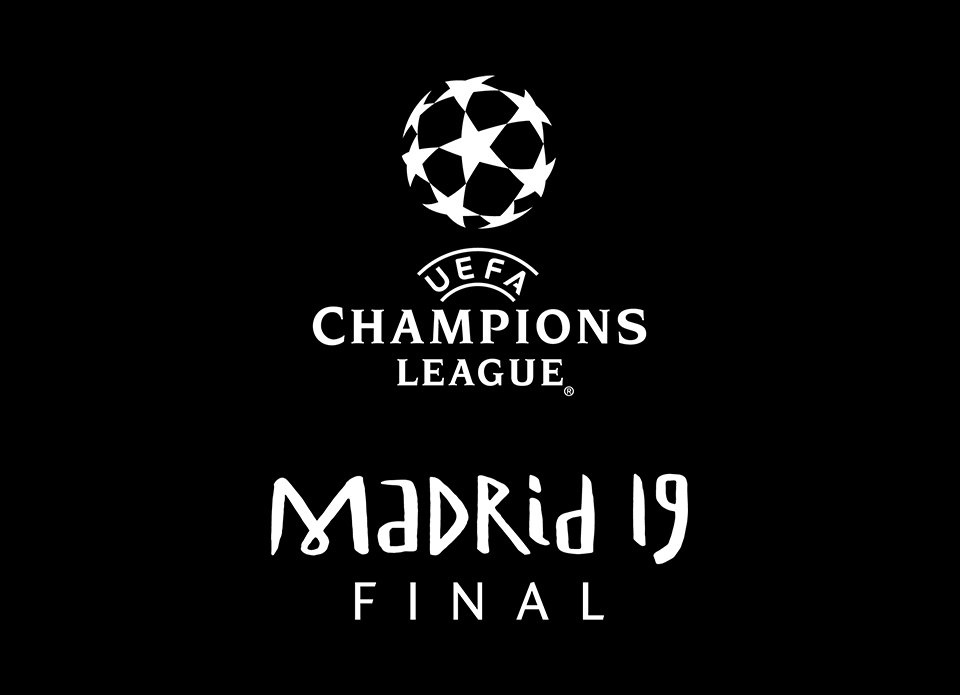Tiny shorts, dodgy taches and terrible mullets. Football from the 80s has a lot to answer for… but it also bore witness to some magical players. Here’s our rundown of the best.
Johan Cruyff
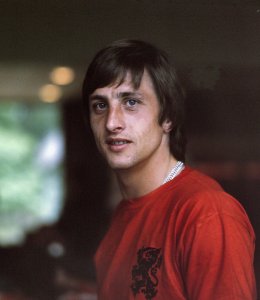
Cruyff with the Netherlands in 1974
No one in the game’s long history has managed to embody so much of what makes kicking a ball around a grass pitch so endlessly entertaining as the Dutchman. Johan Cruyff did it all – play, coach and commentate. He did it all with flair, intelligence and brilliance. A true revolutionary.
With the ball at his feet, he was elegant, fast and clever – he invented a turn for goodness sake. Yes, THAT turn. Playing for Holland against Sweden at the 1974 World Cup he feigned a pass before dragging the ball behind his standing leg, turning 180 degrees, and accelerating away, leaving the victim Jan Olsson looking like he walked out of the house and suddenly remembered he’d left his keys inside. It’s a move players still use today.
During an illustrious playing career, Johan Cruyff won 20 major honours – including three successive European Cups with Ajax from 1971 to 1973.
After winning the third of the triumvirate he moved to Barcelona and won the Catalans their first Liga title for 14 years. Eleven years later, in 1984, he retired after winning a league and cup double with Feyenoord – their first league title in a decade – and was voted Dutch Footballer of the Year for the fifth time.
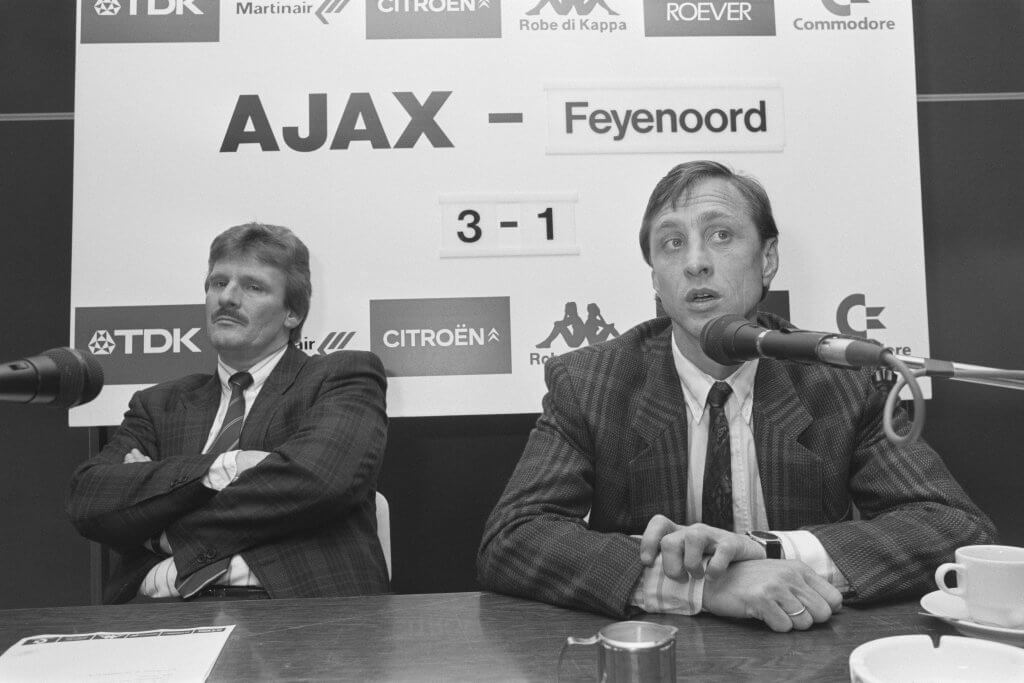
Cruyff as manager of Ajax in 1987
Now it was time to revolutionise how modern football would be played. A great thinker, he tried his hand at management, and overhauled the academies at Ajax and Barcelona, prioritising talent over size. He won three trophies with Ajax and 11 at Barcelona, including four success La Liga titles and the club’s first European Cup.
“Johan Cruyff painted the chapel,” Pep Guardiola once said, “and Barcelona coaches since merely restore or improve it.” His legacy lives on.
Marco van Basten
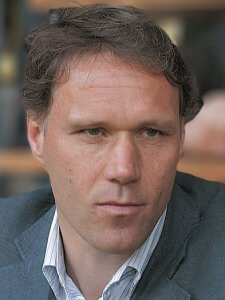
Marco van Basten
An out-and-out, ruthless, unrelenting goalscoring machine. If Marco van Basten was on the pitch, he was prowling with menacing intent. It didn’t matter where he was – inside or outside the box – the opposition’s goalkeeper had to be on his toes. The Dutchman was a threat from all angles and distances. Confident using his left or right, defenders didn’t have the option of showing him onto his weaker foot. And if the ball was lofted into the box he was more than adept at using his head to find the back of the net.
One look at his numbers tells you just how deadly he was: 301 goals during a 14-year career playing for Ajax and AC Milan. But he wasn’t just all goals and no silverware. Marco van Basten’s mantlepiece is creaking under the strain of 14 domestic trophies and three Ballon d’Ors.
When he pulled on the famous Oranje shirt he was just as successful – scoring 24 goals in 58 games. And one of these goals will be replayed time again, no matter how grainy the footage gets.
In the 54th minute of 1988 European Championship final, Holland were leading the Soviet Union 1-0.
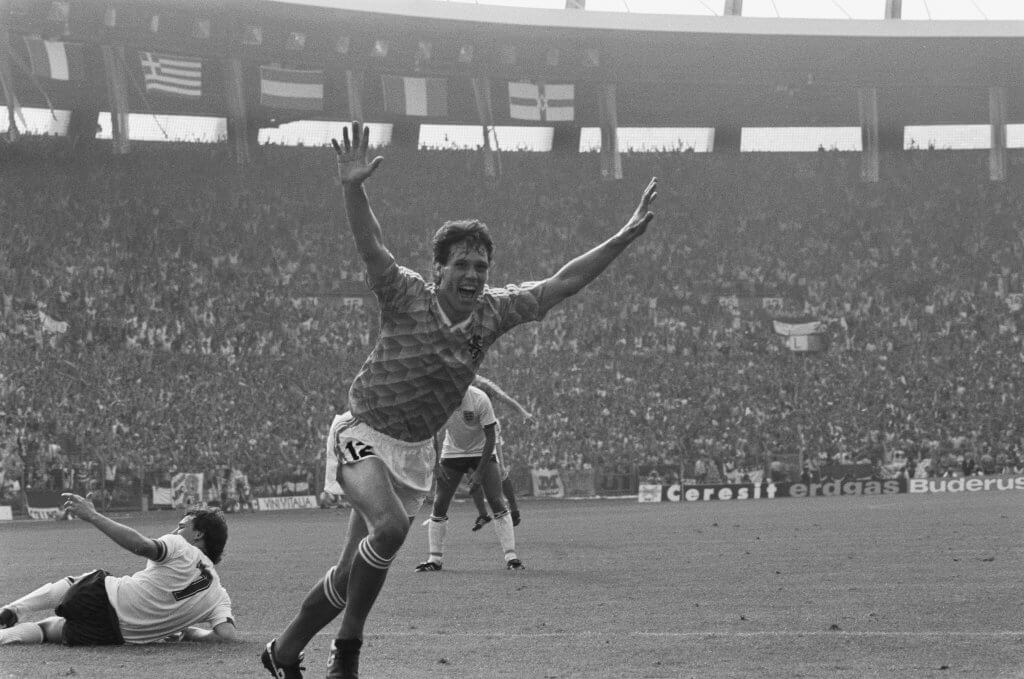
Van Basten celebrates his hat-trick against England at Euro 88
The ageing Arnold Muhren scooped a looping cross from his position on the left wing towards the back post where Van Basten was peeling off a cluster of defenders. The ball dropped out of the sky, on a trajectory to bounce just inside the penalty box, almost hitting the touchline. Before it could connect with the turf, Van Basten leapt in the air, managing to contort his body into an improbable position so that he could connect with a dipping right-foot volley that flew over Rinat Dasaev and into the back of the net. It’s one of the greatest goals of all time and helped Holland win their only major trophy.
But for all he achieved, there’s a ‘what if’ when you open a discussion about his place in the pantheon of the world’s greatest. Van Basten was forced to retire aged 28, thanks to a troublesome ankle injury. What would have he achieved had he been able to play on into his mid-30s? We’ll never know, but we can always punch his name into YouTube and feast on grainy footage of his net-rippling exploits.
Maradona
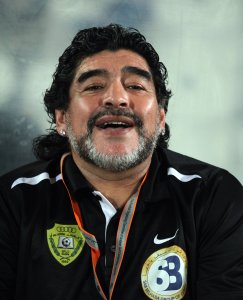
Al Wasl’s Argentinian coach Diego Maradona. © Ureinwohner
For many, the enigmatic Argentine is the greatest of all-time. Putting his misdemeanours to one side – and there are many – Maradona was on different wavelength to his fellow professionals when he had the ball at his feet. Once you’ve finished watching Van Basten goals on YouTube, search for Maradona’s pre-match warm-up ahead of Napoli’s UEFA Cup semi-final against Bayern Munich in 1989. We should warn you, you will want to get up and dance. Bopping along to “Live Is Life” by Austrian pop-rock group Opus, Maradona’s beautiful bouffant bounces as he treats the ball like a dance partner, moving in unison with the precious orb as though they were dancing the Tango on Strictly Comes Dancing.
His warm-ups were mesmerising, but his 90-minute performances would have had Len Goodman shouting, ‘10’.
Completing his football education in the Villa Florito slums, Maradona’s close control and dribbling skills bristled with swagger, guile and improbable sorcery.
Such unique talent could only be acquired with world record transfer fees and that happened twice: first when Barcelona paid £5 million to Boca Juniors in 1982, and secondly when Napoli spent £6.9 million to take him from Catalonia to Campania in 1984.
Maradona’s achievements during his seven seasons in Serie A saw him elevated to footballing deity. El Pibe de Oro’s (The Golden Boy) all-action displays inspired Napoli to Scudetti titles in 1987 and 1990 – their only national league titles to date. Bewitched fans started The Church of Diego Maradona so they can pay homage to their demigod.
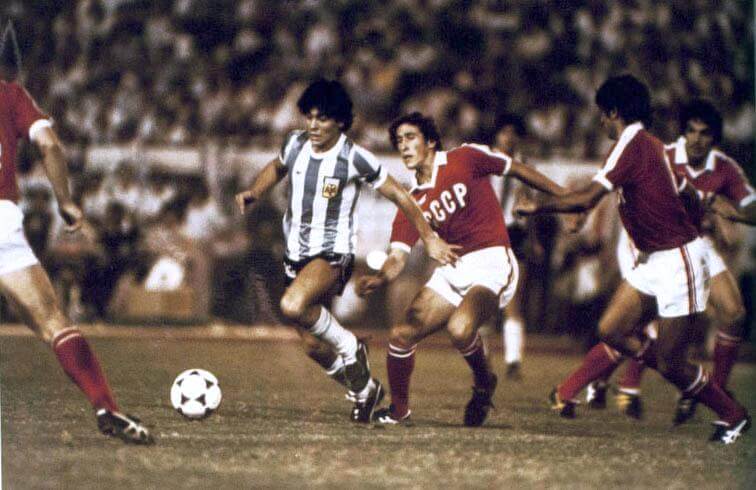
Maradona playing v the Soviet Union at the 1979 FIFA World Youth Championship final
His feverish popularity in southern Italy pales in comparison to the fanatical worship he experiences in Argentina after captaining the national team to victory at the 1986 World Cup. Maradona made five and scored five in Mexico, including another contender for greatest goal of all-time.
In the quarter-final, la Albiceleste faced England at the Estadio Azteca. Four minutes after punching the ball into the back of the net the pint-sized genius picked the ball inside his own half and tore through the England defence, evading challenge after challenge, before rounding Peter Shilton and making it 2-0.
Looking to find out more about Coerver Coaching?


